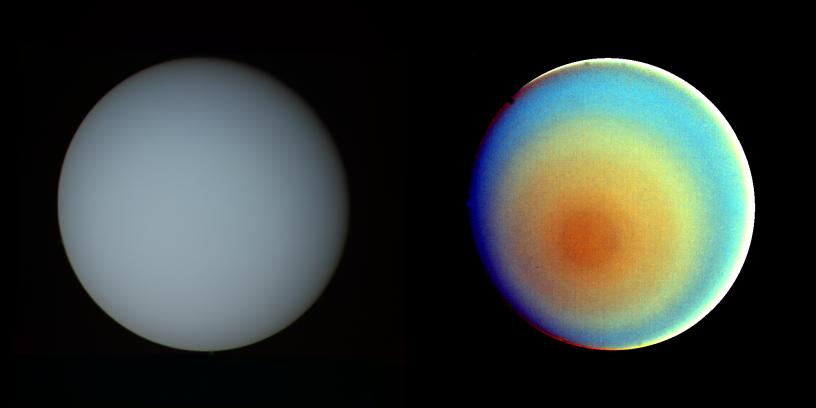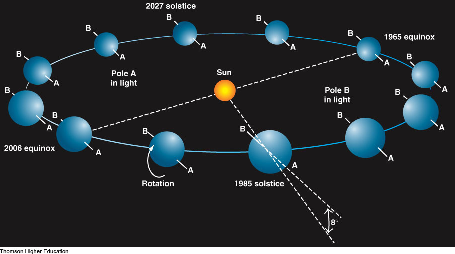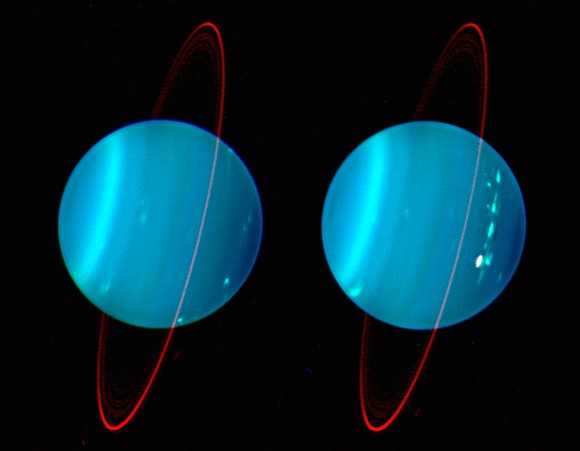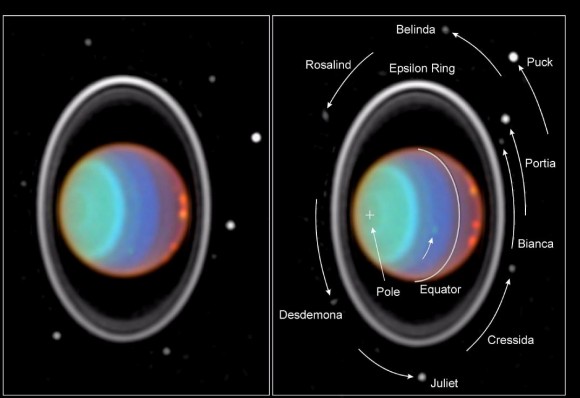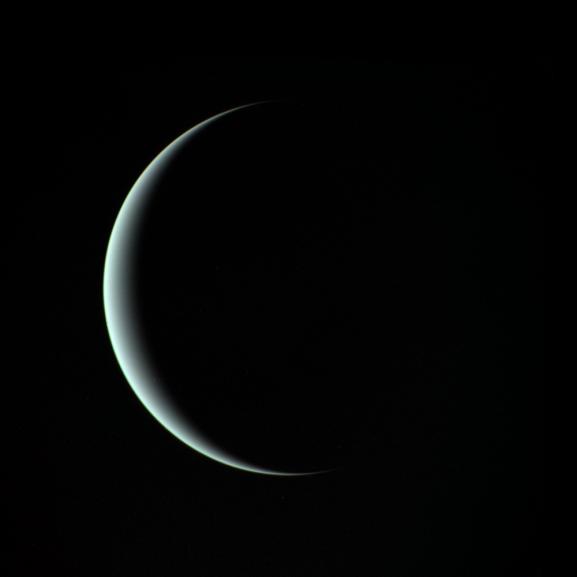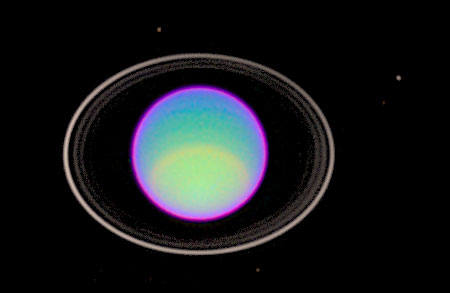[/caption]
Uranus has a mass of roughly 14.5 times that of Earth, which makes it the least massive of the giant planets. Astronomers know that it’s mostly made of various ices, like water, ammonia and methane. And they theorize that Uranus probably has a solid core.
The core of Uranus probably only accounts for 20% of the radius of Uranus, and only about 0.55 Earth masses. With gravity of all the outer mantle and atmosphere, regions in the core experience a pressure of about 8 million bars, and have a temperature of 5,000 Kelvin. That sounds hot, like as hot as the surface of the Sun, but keep in mind that the core of Jupiter is more like 24,000 K – much hotter. The core of Uranus has a density of about 9 g/cm3, which makes it about twice as dense as the average density of the Earth.
For astronomers, Uranus has an unusually low temperature; and that’s a mystery. One ideas is that the same impact that knocked Uranus off its rotational axis might have also caused it to expel much of its primordial heat. With the heat gone, Uranus was able to cool down significantly further than the other planets. Another idea is that there’s some kind of barrier in Uranus’ upper atmosphere that prevents heat from the core to reach the surface.
We have written many stories about Uranus on Universe Today. Here’s an article about a dark spot in the clouds on Uranus, and here’s an article about the composition of Uranus.
If you’d like more info on Uranus, check out Hubblesite’s News Releases about Uranus. And here’s a link to the NASA’s Solar System Exploration Guide to Uranus.
We have recorded an episode of Astronomy Cast just about Uranus. You can access it here: Episode 62: Uranus.


